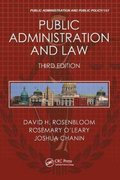


Hey, Economics.
(c) Enumerate five factors that determine the price elasticity of demand of a commodity. (5 marks) (d) Highlight five barriers to occupational mobility of labour. (5 marks) QUESTION ONE (a) Differentiate between "economic resources" and "non economic resources". (1 mark) (b) (i) Explain the term "consumer sovereignty" as used in economics. (1 mark)QUESTION ONE (a) (i) Explain the Keynesian liquidity preference theory of demand for money. (1 mark) (ii) Outline five criticisms of the theory in (a) (i) above. (5 marks)(ii) Describe three methods used in fixing prices under the oligopoly market structure. (6 marks) (c) Highlight six factors that might lead to a rightward shift of the optimal point of a firm. (6 marks) QUESTION ONE (a) (i) Explain the term "price control" as used in economics. (I mark) (ii) Highlight eight reasons for price controls in an economy. (8 marks) (b) Outline six advantages of a controlled market system. (6 marks) (c) With the aid of a diagram, explain the concept of consumer surplus. (5 marks)(a) Explain the role of a shared services unit (SSU). (10 marks) (b) A manufacturer of electrically powered tools for the engineering industry consists of four separate business units, each of which undertakes its own purchasing activities. Discuss THREE benefits of centralising all purchasing activities with those of retaining the present decentralised structure. (15 marks)(a) Examine four limitations of a planned economic system. (4 marks) (b) With the aid ofa diagram, explain the concept of production possibility curve. (5 marks) (c) With the help of a diagram, illustrate the concept of surplus as applied in the theory of market equilibrium. (5 marks) (d) The following equations are given: (a) Explain THREE circumstances in which a competitive tendering exercise might not be the best approach to making a purchase. (15 marks) (b) Describe TWO e-sourcing tools and their use in procurement and supply. (10 marks)DEPARTMENT OF ECONOMICS FIRST SEMESTER, 202(112021 ECONZIS: ELEMENTS OF MATHEMATICS FOR ECONOMISTS ASSIGNMENT 2 - MATRICES 1. Given the inputcoefcient matrix for a hypothetical economy made up of only two [2) 0.1 [1.5 industries as A = 0.3 0.2 , provide an economic interpretation for each of the elements in matrix A. 2. Suppose there are only two industries in an economy, producing two outputs [l and 2). To produce one monetary unit worth of output 1, it requires 0.5 monetary units of output I and 0.4 monetary units of output 2. Similarly, to produce one monetary unit of output 2, it requires [1.3 and [L6 monetary units of outputs 1 and 2 respectively. Write out the matrix of the technical coefcients. 3. Consider an economy divided into agricultural sector, A, and service sector. 5'. To produce one unit in sector A requires 1ft}. units from A and 11/4 units from 5'. To produce a unit of S reguires 1X4 units From A and 1/4 units from 5'. Suppose nal demands in each of the two sectors are 5t) units. Let x and 3! denote total production in industries A and 3 respectively. What is the Leontief system for this economy? 4. The equilibrium levels of income Y, conSumption C, disposable income Yd, and taxation T, for a three-sector macroeconomic model satisfy the structural equations: 1' = C + iU + SD C=n+bYd [U
{l) Yd = Y T thY+TD (U


















